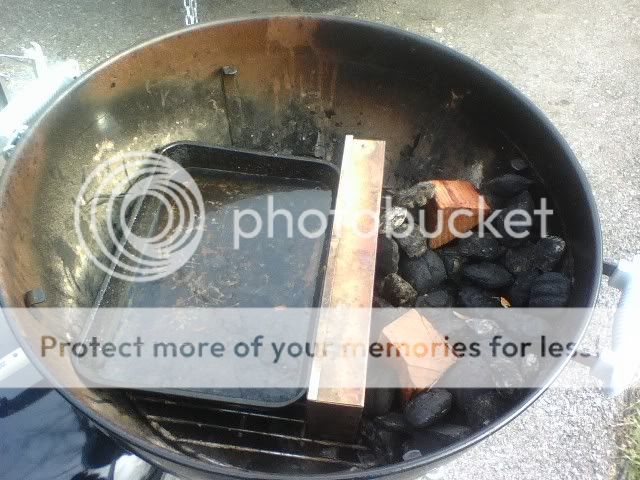propsync
Knows what a fatty is.
- Joined
- Jan 25, 2011
- Location
- Milwauke...
So this last year I really stretched my legs and got after brisket and shoulder on my Webers. The results were very good. Keep in mind I don't have the room for a bunch of kettles AND a WSM (I would love to win the lottery and have some cheesy Raichlen setup on a hill somewhere). Knowing the next step to get better will be easier here than on my own, I pose a few questions:
1. I have not tried using a water pan at all. I really think the brisket is coming off a little dry and wonder if a smaller stainless steel bowl under the grate would be a good route.
2. I only keep charcoal on one side and keep the top vent opposite the coals. Any other ideas? When there are two 7lb. shoulders or an 8lb. brisket, I don't see any other options.
3. Anyone ever use something to cover the two other vents on the bottom that aren't as close to the charcoal? I guess I'm getting too much variation in temp. and I seem to swing 75 degrees on the dome just looking at the lower vent handle.
4. Digital temp for the gate. A must have? I just drilled through the handle for a thermometer and keep the dome temp at 325 figuring it's a little cooler at the grate.
I will never say I do things the easy way. If I had room for an egg and WSM, a LaCaha China, and a few other things I would. I am sadistically obsessed in trying to do everything in an 18.5 and 22.5 Weber. You all can laugh at that, because I'm doing the same. BTW- My $50 Craigslist Performer is under 4 feet of snow. May longer days take all of our troubles away!
1. I have not tried using a water pan at all. I really think the brisket is coming off a little dry and wonder if a smaller stainless steel bowl under the grate would be a good route.
2. I only keep charcoal on one side and keep the top vent opposite the coals. Any other ideas? When there are two 7lb. shoulders or an 8lb. brisket, I don't see any other options.
3. Anyone ever use something to cover the two other vents on the bottom that aren't as close to the charcoal? I guess I'm getting too much variation in temp. and I seem to swing 75 degrees on the dome just looking at the lower vent handle.
4. Digital temp for the gate. A must have? I just drilled through the handle for a thermometer and keep the dome temp at 325 figuring it's a little cooler at the grate.
I will never say I do things the easy way. If I had room for an egg and WSM, a LaCaha China, and a few other things I would. I am sadistically obsessed in trying to do everything in an 18.5 and 22.5 Weber. You all can laugh at that, because I'm doing the same. BTW- My $50 Craigslist Performer is under 4 feet of snow. May longer days take all of our troubles away!






